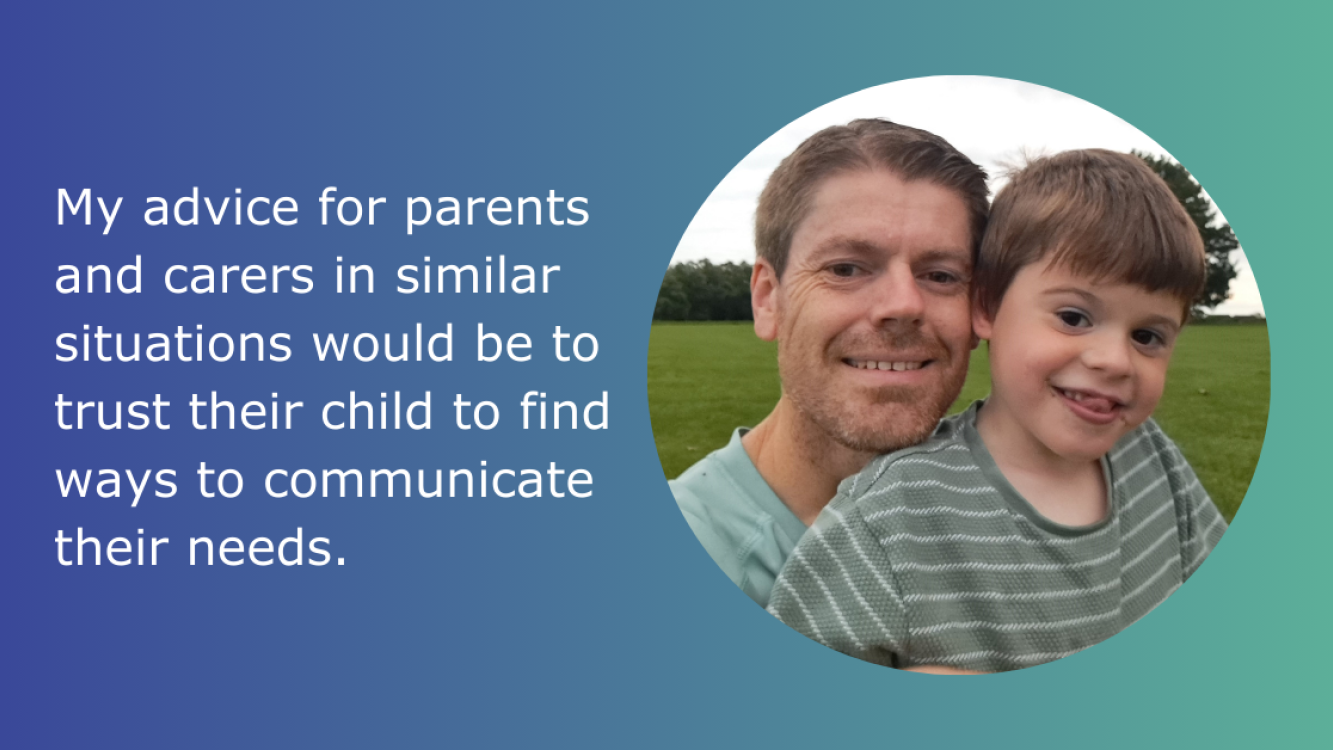Supporting the sensory needs of non-speaking children.
My seven-year-old autistic son William doesn’t speak. He initially developed speech as a young toddler, but these early words are now forgotten, or perhaps William just doesn’t see them as important. More recently, we’ve encouraged William to use the Picture Exchange Communication System (PECS) and other recognised techniques to aid communication. However, William has been unimpressed and disengaged with these efforts, preferring his own forms of expression, which centre on handleading – or, put less elegantly, dragging us to what he wants assistance with. We respect William’s preferred communication style and use his unspoken cues to try to understand his world.
William’s world is exciting and highly sensory. Many autistic individuals feel overwhelmed in busy, unpredictable environments because of sensory overstimulation. However, William is generally not like this and could instead be described as a sensory seeker. This means he seeks out stimulation for his senses, which has influenced everything from his choice of drink bottle to a newfound passion for theme-park rides. Nobody knows exactly why children like William show such sensory cravings, although these clearly allow for emotional regulation in different environments. For William, the stimulation gained seems to provide a combination of comfort and enjoyment as he goes about his day.
Discovering William’s sensory needs has been one of our key growth experiences as parents. It would be easy to assume that his expressions of these needs represent bad behaviour. For example, William consistently seeks stimulation through climbing and balancing. He will attempt to ascend anything he can, including furniture and his caregivers. This form of sensory seeking is quite common in autistic individuals and relates to the proprioceptive and vestibular senses – our perceptions of movement and spatial orientation. These are the same senses William probably triggers during an exciting rollercoaster ride. More regularly, we might accommodate needs of this kind by giving William access to a staircase in a new setting or allowing him to perch in high places in our house, providing it is safe to do so.
William additionally has significant needs for oral sensations. These manifest as attachments to dummies and a desire to bite, chew or suck items, which might again be construed as socially inappropriate. However, we take care to weigh external opinions against William’s comfort and happiness. Moreover, William’s ability to access a range of settings without getting upset is greatly enhanced if we can accommodate his oral sensory needs. As a result, we always provide William with a supply of dummies, chewable snacks and a sports-style drink bottle, which he can choose to access whenever he wants.
William’s sensory needs may seem difficult to decipher, especially with his lack of words. However, our parenting journey has taught us to watch, listen and learn from him in more subtle ways. My advice for parents and carers in similar situations would be to trust their child to find ways to communicate their needs. William likes to handlead, and perhaps our biggest service to him is simply to let ourselves be led.
Paul’s company was inspired by his life with William and now provides online tutoring for autistic students at The Autism Adventure.
This article first appeared in the National Autistic Society's membership magazine Your Autism and was reproduced with kind permission.


